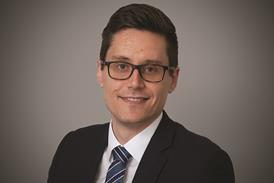Any lawyer who assumes that human trafficking issues are solely for police, prosecutors and the media should heed the recent Court of Appeal judgment in R v O [2008] EWCA 2835. In this case, defence lawyers were scathingly criticised for failing to recognise and act on indications that their client was a victim of trafficking for sexual exploitation.
Crown Prosecution Service guidance, which provides for the discontinuance of immigration charges where the defendant is a ‘credible’ trafficked victim, had not been invoked, despite a letter from a specialist outreach worker which stated that the defendant had been the victim of a sex-trafficking organisation. A vital argument was thus ignored. The appeal court also expressed surprise that the guidance, freely available at www.cps.gov.uk, was not set out in the leading criminal textbooks.
It is not only criminal lawyers who miss points. The immigration practitioner may be dealing with a client who risks being retrafficked.
Key residence decisions depend on recognition of relevant facts. The family lawyer may encounter children who have been trafficked into this country, sometimes by their carers. Employment lawyers and advisers may represent workers trapped in intolerable conditions, or forced to work to pay extortionate charges for travel or accommodation. Waiting for a client to self-identify will not suffice. Many clients will be unwilling or unable to raise the issue first, because of fear, ignorance or linguistic barriers.
The definition of trafficking derives from the Trafficking Protocol to the 2000 UN Convention on Organised Crime, which represented a significant development in understanding. It drew a clear distinction between smuggling (where the individual is the consumer) and trafficking (where they are the commodity). It also recognised that trafficking is a crime, the detection of which requires prioritisation over the requirements of immigration control.
A framework for action at national level is provided by the Council of Europe Convention on Action against Trafficking in Human Beings ETS 197. This is expected to be ratified later this month, coming into force in April 2009. Implementation measures include a 45-day reflection period, together with support for those whom there are reasonable grounds to believe are victims of trafficking. There is also a one-year renewable residence permit – either because the individual’s presence is necessary for an investigation or prosecution, or for welfare reasons.
One of the most innovative aspects of action against trafficking is how it has brought together different stakeholders. Article 35 of the Council of Europe Convention encourages state authorities ‘to cooperate with non-governmental organisations [NGOs], other relevant organisations and members of civil society’.
A cooperative approach is already being pioneered by the Sheffield-based United Kingdom Human Trafficking Centre (UKHTC), premised from the start on the participation of NGOs. One of these is the London-based Poppy Project, which houses victims of sexual exploitation and which recently participated in a pilot to house victims of forced labour. It has also played a crucial role not only in supporting victims, but also in identifying them in the first place by reaching out across linguistic and cultural barriers.
The involvement of civil society goes beyond specialist advisers, however, as press reports last week of the involvement of the Women’s Institute in identifying sex trafficking show.
Article 15 of the convention requires the state to provide access to compensation and legal redress, including the right to legal assistance and to free legal aid for victims. This means competent legal assistance. The judiciary is starting to increase its awareness of the issue through training and familiarity with the indicators, as shown by judgments such as R v O.
For moral but also for practical and professional reasons, lawyers cannot afford to be left behind.
Sandhya Drew is a barrister at Tooks Chambers in London. Her book on human trafficking will be published early next year by the Legal Action Group. Glynn Rankin at the UKHTC contributed to this article.



























No comments yet